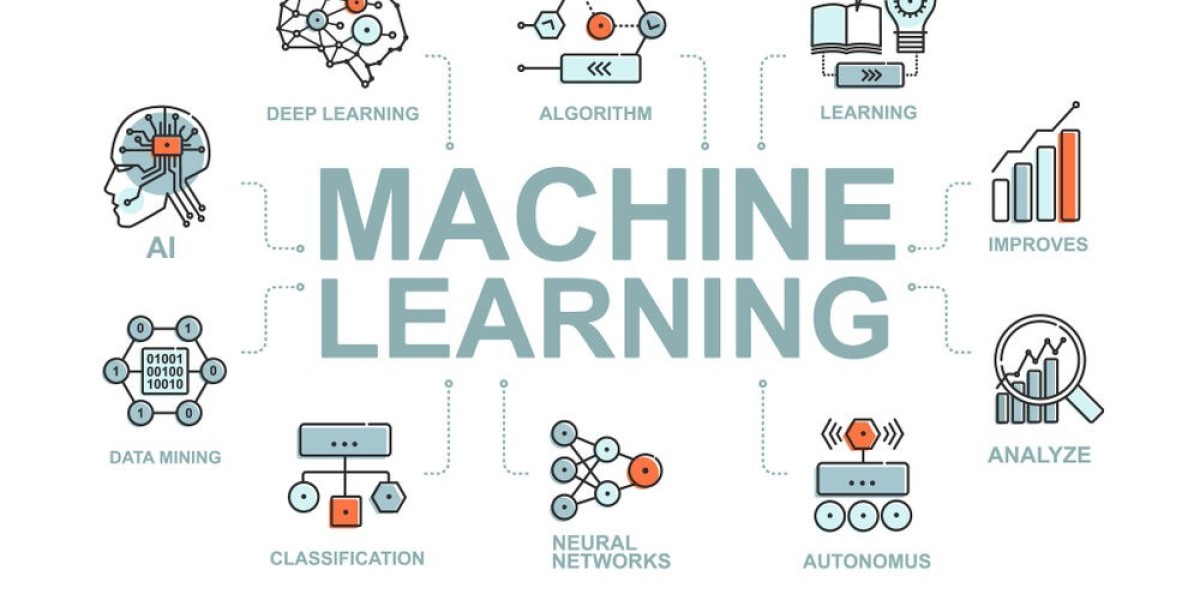In the landscape of modern technology, data holds the key to unlocking valuable insights and driving informed decision-making. Machine learning (ML) and Python data analysis serve as powerful instruments in this endeavor, offering sophisticated tools and methodologies to extract meaningful knowledge from vast datasets.
Understanding Machine Learning
At its core, machine learning is a branch of artificial intelligence (AI) concerned with developing algorithms that enable computers to learn from data and make predictions or decisions without being explicitly programmed. ML algorithms are designed to identify patterns within data, facilitating tasks such as classification, regression, clustering, and anomaly detection.
There are several categories of machine learning algorithms:
Supervised Learning: In supervised learning, algorithms are trained on labeled data, where each input is paired with a corresponding output. The goal is for the algorithm to learn the mapping between inputs and outputs, enabling it to make predictions on unseen data.
Unsupervised Learning: Unsupervised learning involves training algorithms on unlabeled data, allowing them to discover hidden patterns and structures independently. Clustering, dimensionality reduction, and association rule learning are common tasks in this category.
Reinforcement Learning: Reinforcement learning is a paradigm where an agent learns to make sequential decisions by interacting with an environment. The agent receives feedback in the form of rewards or penalties based on its actions, guiding it towards achieving specific goals.
Deep Learning: Deep learning is a subset of ML that utilizes artificial neural networks with multiple layers to learn complex patterns in data. Deep learning has demonstrated remarkable success in tasks such as image recognition, natural language processing, and speech synthesis.
Python as the Go-To Language for Data Analysis
Python has emerged as the language of choice for data analysis and machine learning due to its simplicity, versatility, and extensive ecosystem of libraries. Some of the most widely used libraries for data analysis in Python include:
NumPy: NumPy provides support for multidimensional arrays and matrices, along with a collection of mathematical functions to operate on these arrays efficiently. It serves as the foundation for many other data analysis libraries in Python.
Pandas: Pandas is a powerful library for data manipulation and analysis, offering data structures like DataFrames and Series that simplify tasks such as data cleaning, transformation, and exploration.
Matplotlib and Seaborn: Matplotlib is a comprehensive plotting library that enables the creation of static, interactive, and animated visualizations in Python. Seaborn builds on top of Matplotlib and provides a high-level interface for creating attractive statistical graphics.
Scikit-learn: Scikit-learn is a versatile machine learning library that offers a wide range of algorithms for classification, regression, clustering, and dimensionality reduction. It also provides utilities for model selection and evaluation.
TensorFlow and PyTorch: TensorFlow and PyTorch are popular deep learning frameworks that facilitate the development and training of neural networks. They offer high-level APIs for rapid prototyping as well as low-level functionalities for fine-tuning models.
The Data Analysis Process with Python
The data analysis process typically involves the following steps:
Data Collection: Gathering relevant data from various sources, such as databases, APIs, or files.
Data Cleaning: Preprocessing the data to handle missing values, outliers, and inconsistencies.
Exploratory Data Analysis (EDA): Analyzing the data through summary statistics, visualizations, and hypothesis testing to gain insights into its underlying patterns and relationships.
Feature Engineering: Creating new features or transforming existing ones to improve the performance of machine learning models.
Model Building and Evaluation: Selecting appropriate algorithms, training them on the data, and evaluating their performance using suitable metrics.
Deployment and Monitoring: Deploying the model into production and continuously monitoring its performance to ensure its effectiveness over time.
Challenges and Future Directions
While Python and machine learning have revolutionized data analysis, several challenges persist. These include ethical concerns regarding data privacy and bias, as well as the need for model interpretability and transparency.
Looking ahead, emerging trends such as explainable AI, federated learning, and automated machine learning (AutoML), econometric analysis are poised to shape the future of data analysis. Additionally, the integration of machine learning techniques with cutting-edge technologies like edge computing and quantum computing holds promise for addressing complex problems at scale.
In conclusion, machine learning and Python data analysis have become indispensable tools for extracting insights from data in today's data-driven world. With their continued advancement and adoption, they are set to drive innovation across industries, empowering organizations to make informed decisions and unlock new opportunities for growth and innovation.







